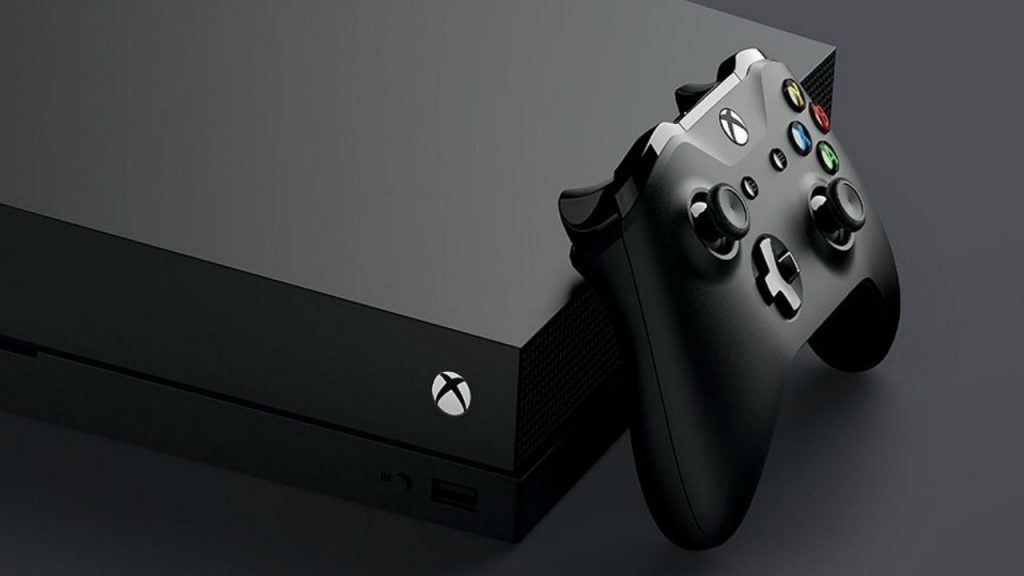This post is about how Microsoft makes money. Firstly, we explain the key elements of Microsoft business model. Then, we provide the revenues, the profits, and the profit margins of Microsoft for FY 2015 (fiscal year ending June 2015). Then, we provide information on Microsoft business segments. Finally, we provide Microsoft revenues by its business segments and key product groups for the year FY 2015.
About Microsoft
Microsoft is the world’s leading technology company. Microsoft offers a wide range of software products, services, and devices. Microsoft offers:
- Software products, including operating systems for computing devices, servers, phones, and other intelligent devices; Server applications for distributed computing environments; Cross-device productivity applications; Business solutions applications; Desktop and server management tools; Software development tools; Video games; and Online advertising.
- Hardware products, including PCs, Tablets, Gaming and entertainment consoles, Phones, Other intelligent devices, and Related accessories.
- Cloud-based solutions.
- Consulting and product solution support services.
- Training and certification services.

Key Elements of Microsoft Business Model
Microsoft generates revenue by developing, licensing, and supporting a wide range of software products, by offering an array of services, including cloud-based services to consumers and businesses, by designing, manufacturing, and selling devices that integrate with its cloud-based services, and by delivering relevant online advertising to a global audience.
Microsoft customers include individual consumers, organizations, OEMs (original equipment manufacturers), and application developers.
Individual consumers make own buying decisions for the devices they use at work or home. They obtain Microsoft products through distributors, re-sellers, and OEMs. Microsoft generates revenues from individual consumers through Office Consumer, Devices, Gaming, and non-volume licensing of Windows operating system.
- Office Consumer includes Microsoft Office applications sold through retail or through an Office 365 Consumer subscription. Office Consumer services include Outlook.com, OneDrive, and consumer Skype services.
- Devices include Lumia and other non-Lumia phones, Surface devices and accessories, and Microsoft PC accessories.
- Gaming includes Xbox hardware and Xbox Live. Microsoft generates revenue from Xbox Live through transactions, subscriptions, and advertising. Microsoft also earns revenues through the sale of first-party video games and third-party video game royalties.

Microsoft serves organizations of different sizes, including large global enterprises, small- and medium-sized organizations (SMEs), public sector institutions, Internet service providers, and Academic institutions. The company offers tailored license programs, enterprise-wide support, consulting services, and other specialized services to the organizations. Microsoft generates revenues from organizations through Office Commercial, Volume licensing of Windows operating system, Microsoft Dynamics business solutions, server products and services, enterprise services, and advertising.
- Office Commercial includes volume licensing to Microsoft Office for business and subscriptions to Office 365 Commercial and services such as Microsoft Office, Exchange, SharePoint, and Skype for Business, and related Client Access Licenses (“CALs”).
- Microsoft Dynamics’ business solutions include Dynamics ERP products, Dynamics CRM on-premises, and Dynamics CRM Online (“Microsoft Dynamics”).
- Server products and services include Windows Server, Microsoft SQL Server, Visual Studio, System Center, and related CALs, as well as Microsoft Azure.
- Enterprise Services include Premier Support Services and Microsoft Consulting Services.
- Advertising includes MSN Display advertising and Bing Search Advertising.
Microsoft distributes software through OEMs that pre-install software on new PCs, tablets, servers, phones, and other intelligent devices that they sell. The largest component of the OEM business is the Windows operating system pre-installed on computing devices. Along with Windows OEM licensing (“Windows OEM”), Microsoft also generates revenue through Windows Phone licensing, patent licensing, and Windows Embedded.
Microsoft serves two broad categories of OEMs. There are “Direct OEMs” such as Acer, ASUSTek, Dell, Fujitsu, Hewlett-Packard, Lenovo, Samsung, and Toshiba. Microsoft manages relationships with these OEMs through a direct agreement. Then, there are lower-volume PC manufacturers, which source Microsoft software for pre-installation and local distribution primarily through the Microsoft distributor channel rather than through a direct agreement with Microsoft.
The company also generates revenues from application developers through developer tools and training and certification on various Microsoft products. Creating a strong developer community is an important element of Microsoft’s business model. This helps them create platform-based ecosystems that can benefit from the same-side and the cross-side network effects among users and application developers. The network effects help in accelerating growth and creating a strong competitive advantage.
To advertise their products and services to the appropriate target audience, all forms of businesses need advertisement. Advertising is the method of informing, educating, and reminding people about such goods and services through advertisements.
The following diagram shows the key elements of the Microsoft business model. It shows how the money flows in from the different customer segments and the key cost elements where the money flows out to.

Microsoft’s most significant expenses are related to compensating employees, designing, manufacturing, marketing, and selling its products and services, data center costs in support of its cloud-based services, and income taxes. The details of the key cost elements are as follows:
Cost of revenue include:
- manufacturing and distribution costs for products sold and programs licensed;
- operating costs related to product support service centers and product distribution centers;
- costs incurred to include software on PCs sold by OEMs and drive traffic to its websites;
- costs incurred to support and maintain Internet-based products and services, including data center costs and royalties;
- warranty costs;
- inventory valuation adjustments;
- costs associated with the delivery of consulting services;
- the amortization of capitalized software development costs.
Research and development (R&D) expenses include:
- payroll, employee benefits, stock-based compensation expense, and other headcount-related expenses associated with product development;
- third-party development and programming costs;
- localization costs incurred to translate software for international markets;
- the amortization of purchased software code.
Sales and marketing (S&M) expenses include:
- payroll, employee benefits, stock-based compensation expense, and other headcount-related expenses associated with sales and marketing personnel;
- the costs of advertising, promotions, trade shows, seminars, and other programs.
General and administrative (G&A) expenses include:
- payroll, employee benefits, stock-based compensation expense, severance expense, and other headcount-related expenses associated with finance, legal, facilities, certain human resources, and other administrative personnel;
- certain taxes, and legal and other administrative fees.
Impairment, integration, and restructuring expenses include:
- costs associated with the impairment of goodwill and intangible assets related to Microsoft’s Phone Hardware business;
- employee severance expenses and costs associated with the consolidation of facilities and manufacturing operations related to restructuring activities;
- systems consolidation and other business integration expenses associated with Microsoft acquisition of Nokia Devices and Services (NDS) business.
Microsoft profits and profits margins FY 2015
Of the $93.6 billion of Microsoft’s total revenues in FY’15 (fiscal year ending June 30, 2015), $33.0 billion were the cost of revenue. This resulted in $60.5 billion of gross profit and a gross margin of 64.7%. Microsoft’s other operating costs were $42.4 billion. These include research and development, sales and marketing, general and administrative, and impairment, integration, and restructuring expenses. This resulted in $18.2 billion of operating profit and an operating margin of 19.4%. After interest and other non-operating income and expenses and income taxes, Microsoft had a net profit of $12.2 billion and a net margin of 13.0%.
Microsoft Business Segments
Up until its last fiscal year (FY ending June 30, 2015), Microsoft had six business segments organized into two business groups: Devices and Consumer (“D&C”) and Commercial. The Devices and Consumer (“D&C”) segments included D&C Licensing, Computing, and Gaming Hardware, Phone Hardware, and D&C Other. The Commercial segments included Commercial Licensing and Commercial Other. These business segments are represented in the following diagram.
On September 28, 2015, Microsoft announced changes in the reporting of its financial results. Microsoft consolidated six operating segments into three. The new segments are Productivity and Business Processes, Intelligent Cloud, and More Personal Computing. The different product groups were moved around to fit under the three reporting segments. The new structure, with the same product groups, is represented in the following diagram:
Below is a simplified version of Microsoft’s new financial reporting structure and the product groups within them.

Microsoft FY 2015 Revenues by Business Segments – As per Old Financial Reporting Structure
Of the total revenues of $93.6 billion in FY’15, Microsoft generated
- $15.0 billion in revenues, 16.0% of the total, from the D&C Licensing segment.
- $10.2 billion in revenues, 10.9% of the total, from the Computing and Gaming Hardware segment.
- $7.5 billion revenues, 8.0% of the total, from the Phone Hardware segment.
- $8.8 billion in revenues, 9.4% of the total, from the D&C another segment.
- $41.0 billion in revenues, 43.9% of the total, from the Commercial Licensing segment.
- $10.8 billion in revenues, 11.6% of the total, from the Commercial another segment.
Microsoft FY 2015 Revenues by Business Segments – As per New Financial Reporting Structure
Of the total revenues of $93.6 billion in FY’15, Microsoft generated
- $26.4 billion in revenues, 28.2% of the total, from the Productivity and Business Processes segment.
- $23.7 billion in revenues, 25.3% of the total, from the Intelligent Cloud segment.
- $43.0 billion in revenues, 45.9% of the total, from the More Personal Computing segment.
Microsoft FY 2015 Revenues by Key Product Groups
Of the total revenues of $93.6 billion in FY’15, Microsoft generated
- $23.5 billion in revenues, 25.2% of the total, from the Microsoft Office System.
- $18.6 billion in revenues, 19.9% of the total, from the Server Products and Tools.
- $14.8 billion revenues, 15.8% of the total, from the Windows PC Operating System.
- $9.1 billion in revenues, 9.7% of the total, from the Xbox business.
- $7.7 billion revenues, 8.2% of the total, from the Phone business.
- $5.1 billion revenues, 5.4% of the total, from the Consulting and Product Support Services business.
- $4.6 billion revenues, 4.9% of the total, from the Advertising business.
- $3.9 billion revenues, 4.2% of the total, from the Surface devices business.
- $6.2 billion revenues, 6.7% of the total, from the Other products.










